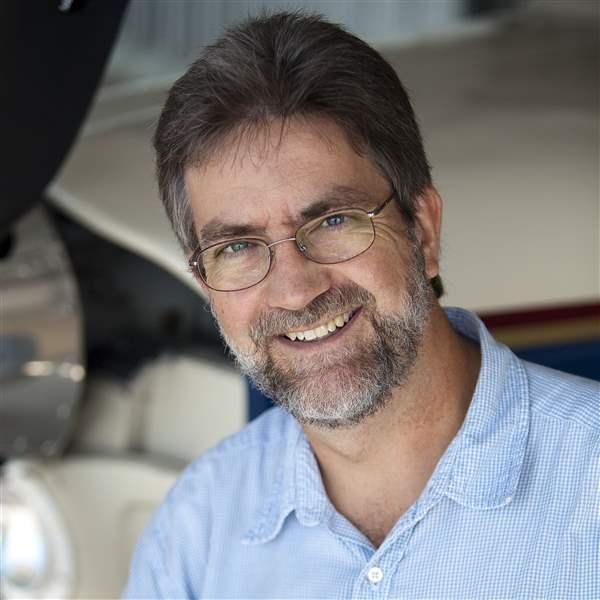One of the things that I like best about aviation is the fact that every flight adds new entries into a pilot's mental logbook--that record of experiences that helps us grow and develop as pilots, as well as a repository of memories. And I've found that there is something to remember about every flight.
One of the things that I like best about aviation is the fact that every flight adds new entries into a pilot's mental logbook--that record of experiences that helps us grow and develop as pilots, as well as a repository of memories. And I've found that there is something to remember about every flight.
A few weeks ago, I found myself in the cockpit of a Cessna 172 with Chip Wright, a flight instructor, regional airline captain, and contributor to AOPA Flight Training. We were flying from Ohio State University Airport in Columbus, Ohio, to Ocean City Municipal Airport on the Maryland coast. He's writing a couple of articles on how to plan and execute a cross-country flight, and I accompanied him to shoot photos and create a multimedia record of the journey. (Look for his articles to appear in the magazine sometime next year.) The 386-nm trip was particularly enjoyable for several reasons:
- We finally got to fly the trip. It was something we'd been trying to pull off for more than a year, focusing on the narrow windows where Chip's schedule overlapped my availability. Because we live in different states we also had to make our go/no-go decisions a day or two before the actual flight--and we wanted better weather for photography than we'd ordinarily need for a visual flight rules (VFR) trip. The waiting reminded me of my long cross-country solo flight as a student pilot; my flight instructor had signed me off for the trip so many times that there was no more room for endorsements in the back of my first logbook.
- It's always enjoyable to fly with another pilot, and I'd never had the opportunity to fly with Chip before. Pilots have different ways of planning, organizing the cockpit, and conducting a flight, and it's always educational to fly with somebody else.
- The trip provided an unusual opportunity to fly through my home airspace with another pilot, allowing me to serve both as tour guide and coach.
We spent a lot of time deciding where the trip should go, so that the resulting magazine articles and online content will be as relevant as possible to you, our readers. While Ocean City Municipal is a nontowered airport, Ohio State University Airport has a control tower. The route was long enough that, flying a Cessna 172 with standard fuel tanks, a refueling stop--if not mandatory--definitely had to be considered (and we chose to make one in Martinsburg, West Virginia). Also, the route put the Baltimore-Washington Class B airspace, and its attendant special flight rules area, squarely in our path. All pilots operating under VFR within 60 nautical miles of the DCA VOR--center of the Washington, D.C., Metropolitan Area Special Flight Rules Area--must complete an awareness training course offered online at FAA Safety.gov (both of us had, so no problems there).
The weather we experienced during the trip was worth waiting for. It was generally clear with just a few clouds, and the winds aloft were almost calm throughout the journey. We received VFR traffic advisories from helpful air traffic controllers the whole way, and got to listen as a Potomac Approach controller working an airspace sector near Baltimore went out of his way to help another VFR aircraft avoid some restricted airspace. One of the most memorable sights of the trip came as we flew eastbound across the Chesapeake Bay at 5,500 feet; looking down, I saw several thousand feet below us--too far away to be called out to us by air traffic control--a Republic A-10C Thunderbolt II, better know as a Warthog another, and another, and another. The four jets most likely belonged to the Maryland Air National Guard's 175th Wing, based at Martin State Airport north of Baltimore.
---
It's been my privilege for nearly eight years to help guide you through the flight training process. Effective with this issue, however, I'm transitioning to a new role within AOPA, and leaving AOPA Flight Training in the capable hands of Deputy Editor Ian Twombly and the rest of the magazine's talented team. He'll take over this column beginning next month. There are a lot of great things in the works for the magazine that you won't want to miss.
I'll still be contributing to the magazine--and, in fact, I expect to have more opportunities to write feature articles for both AOPA Flight Training and AOPA Pilot, a passion that I haven't been able to pursue as much as I'd like. One article I'm researching is ways to control your cost of flight training. What do you do to keep your flight-training expenses in check? I'd love to hear what's worked for you--and what hasn't. Please drop me an e-mail or weigh in on the Flight Training section of AOPA's Reporting Points blog. I look forward to hearing from you, and hope to see you at the airport.
E-mail Mike Collins, editor of AOPA Flight Training, at mike.collins@ aopa.org



